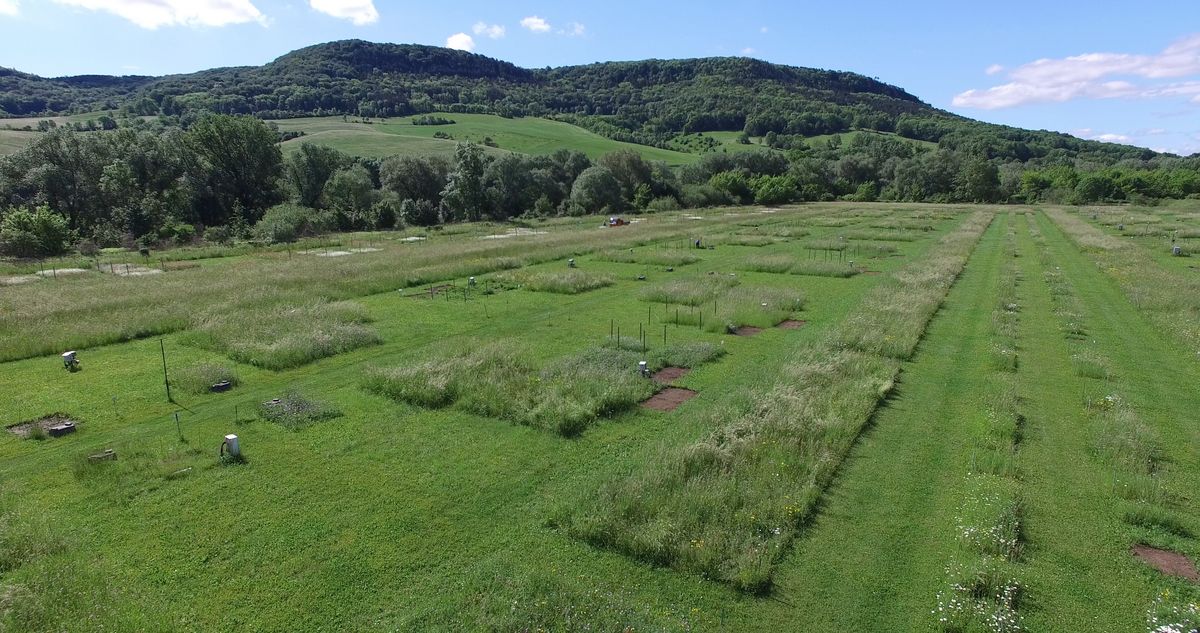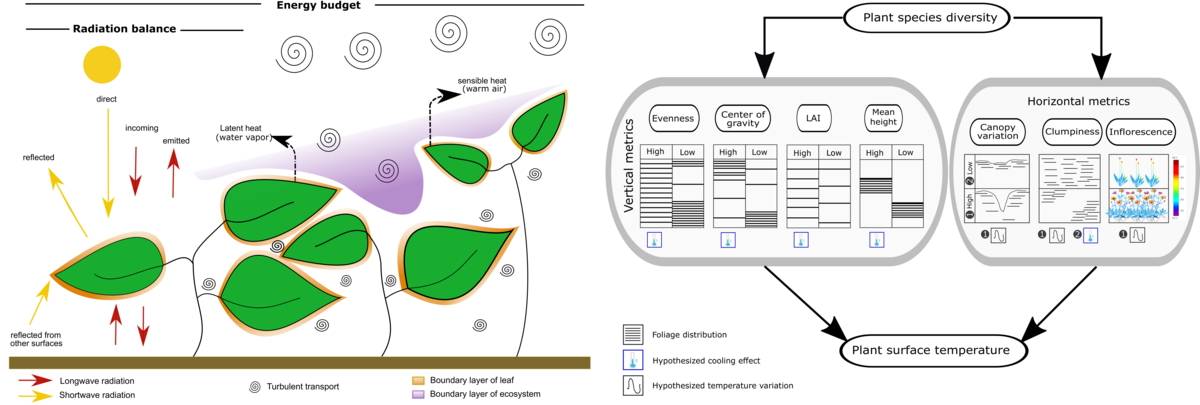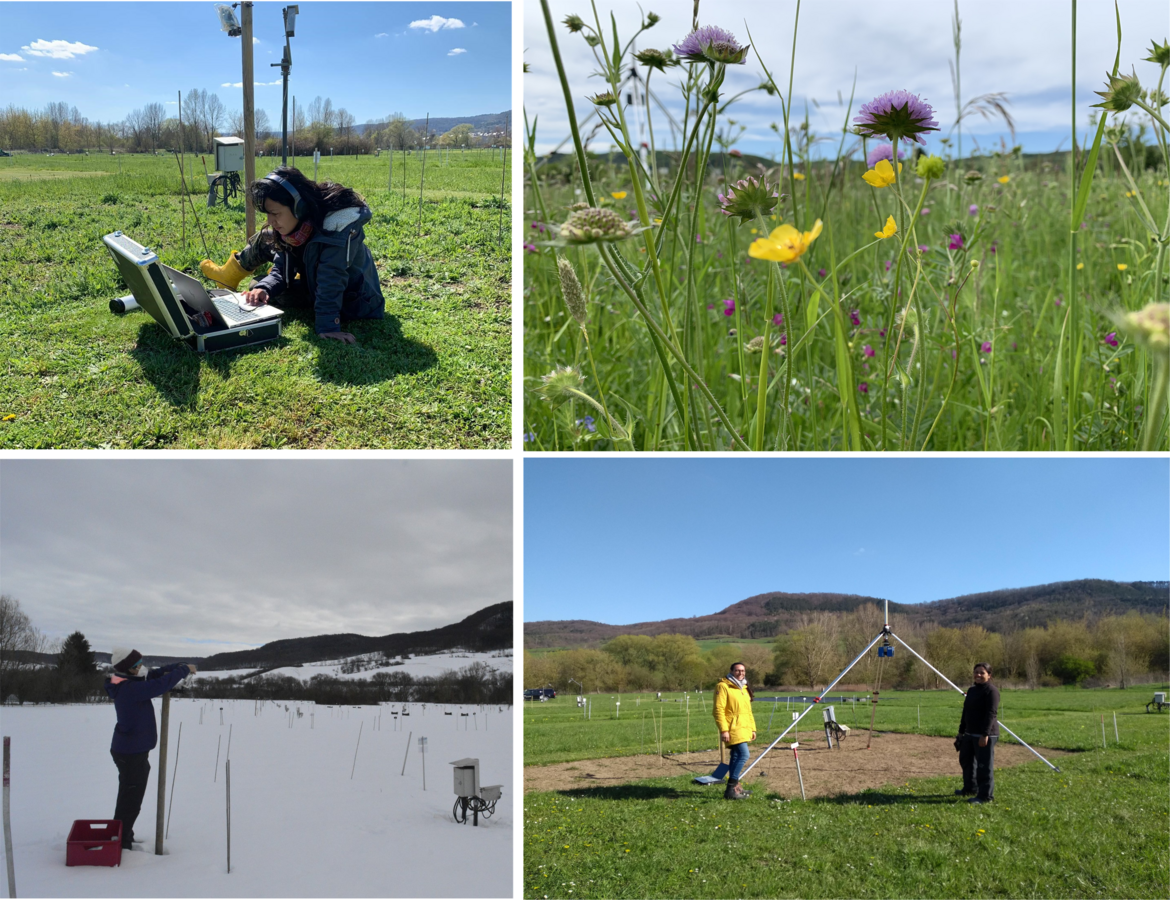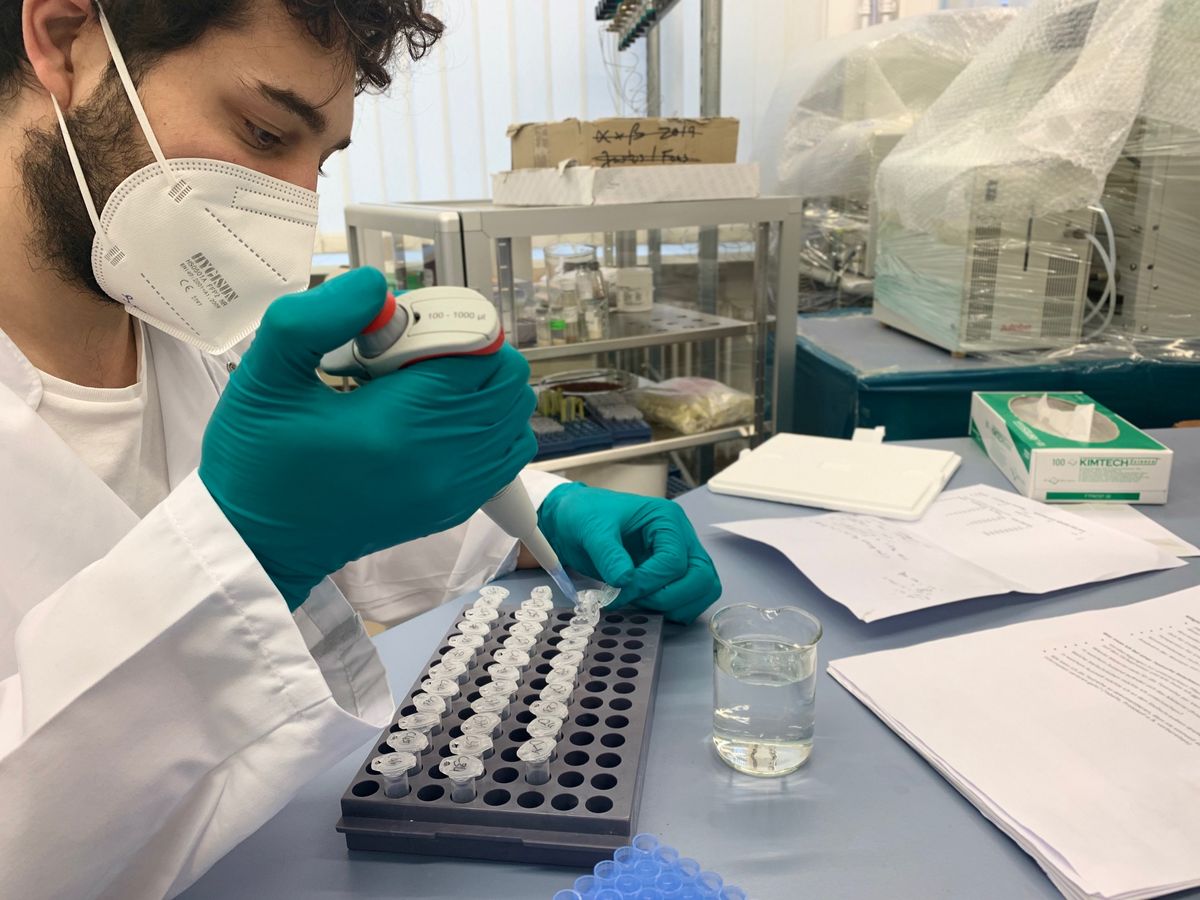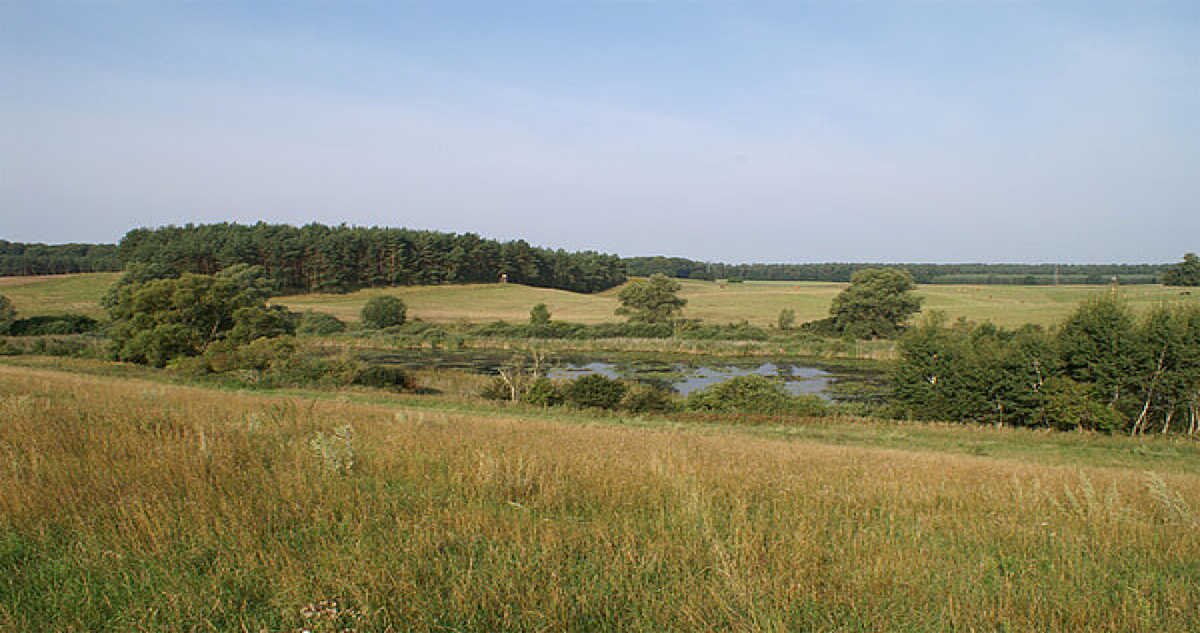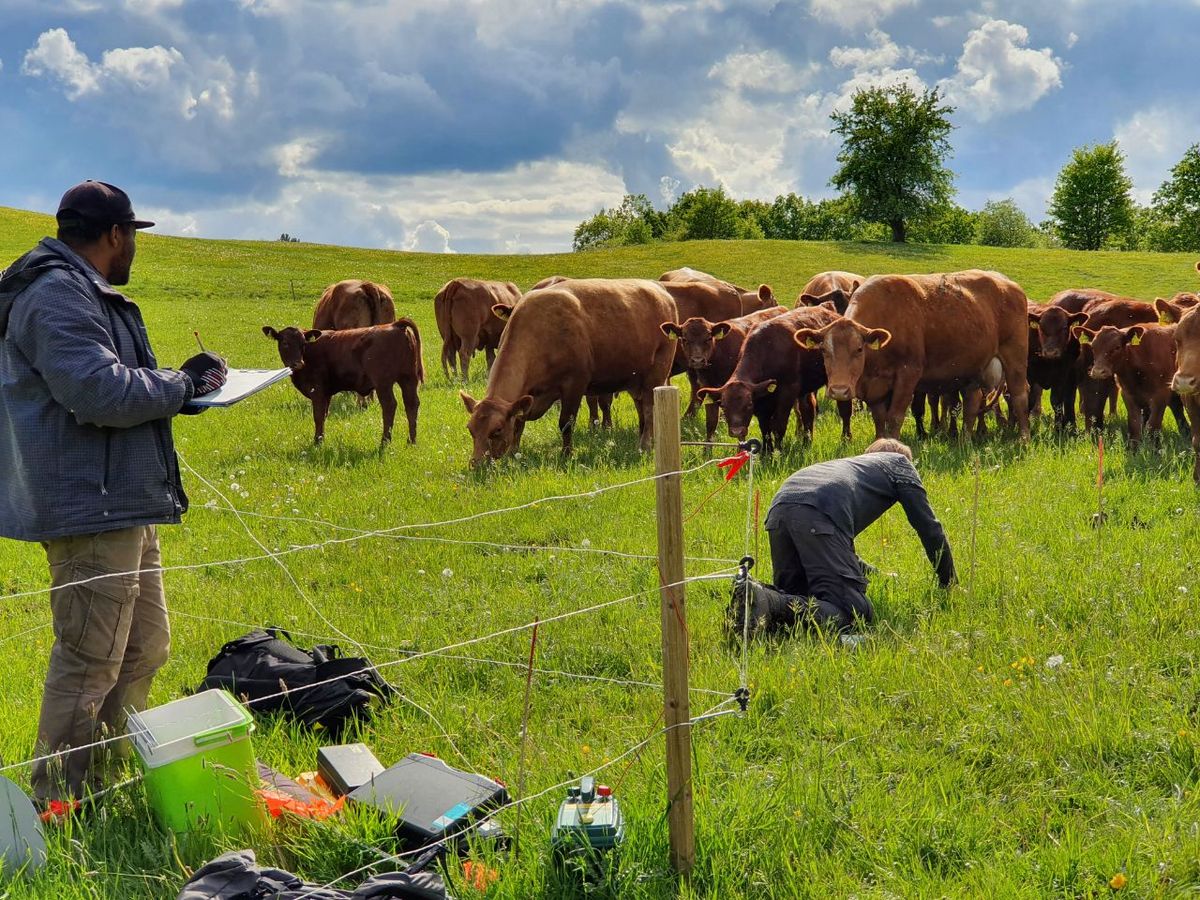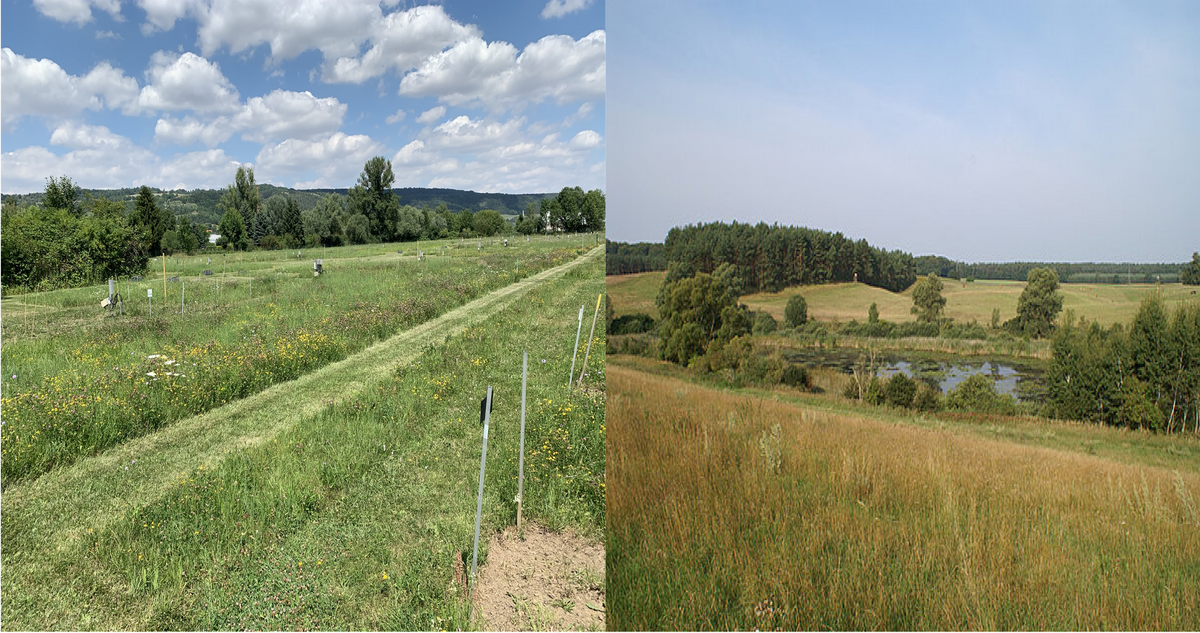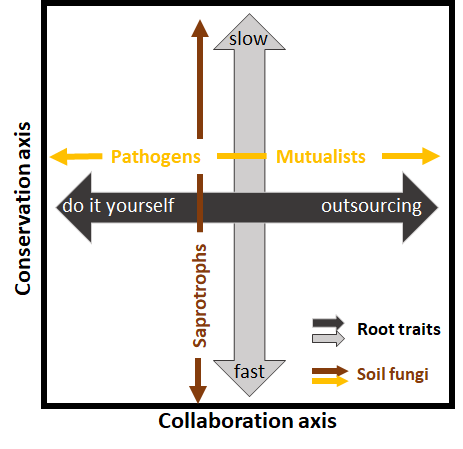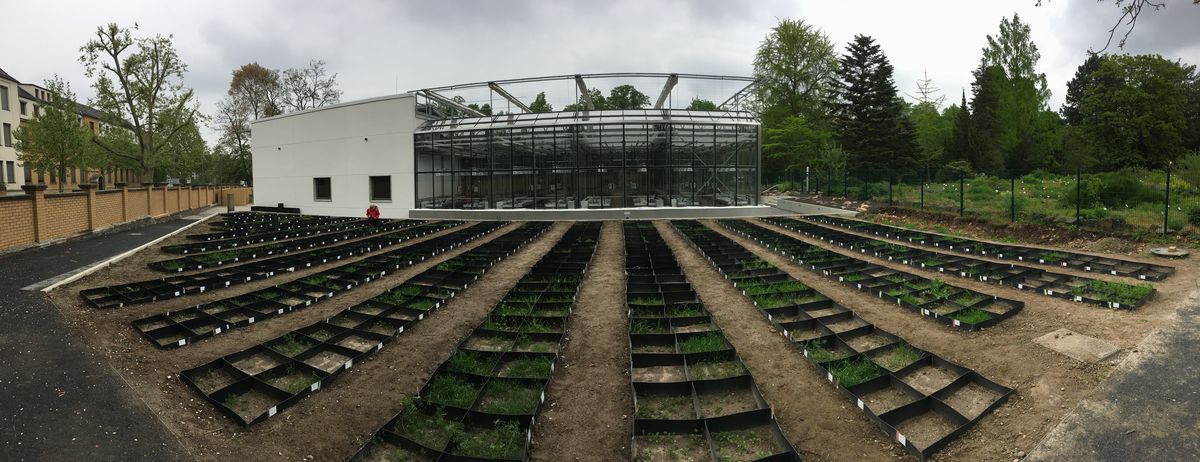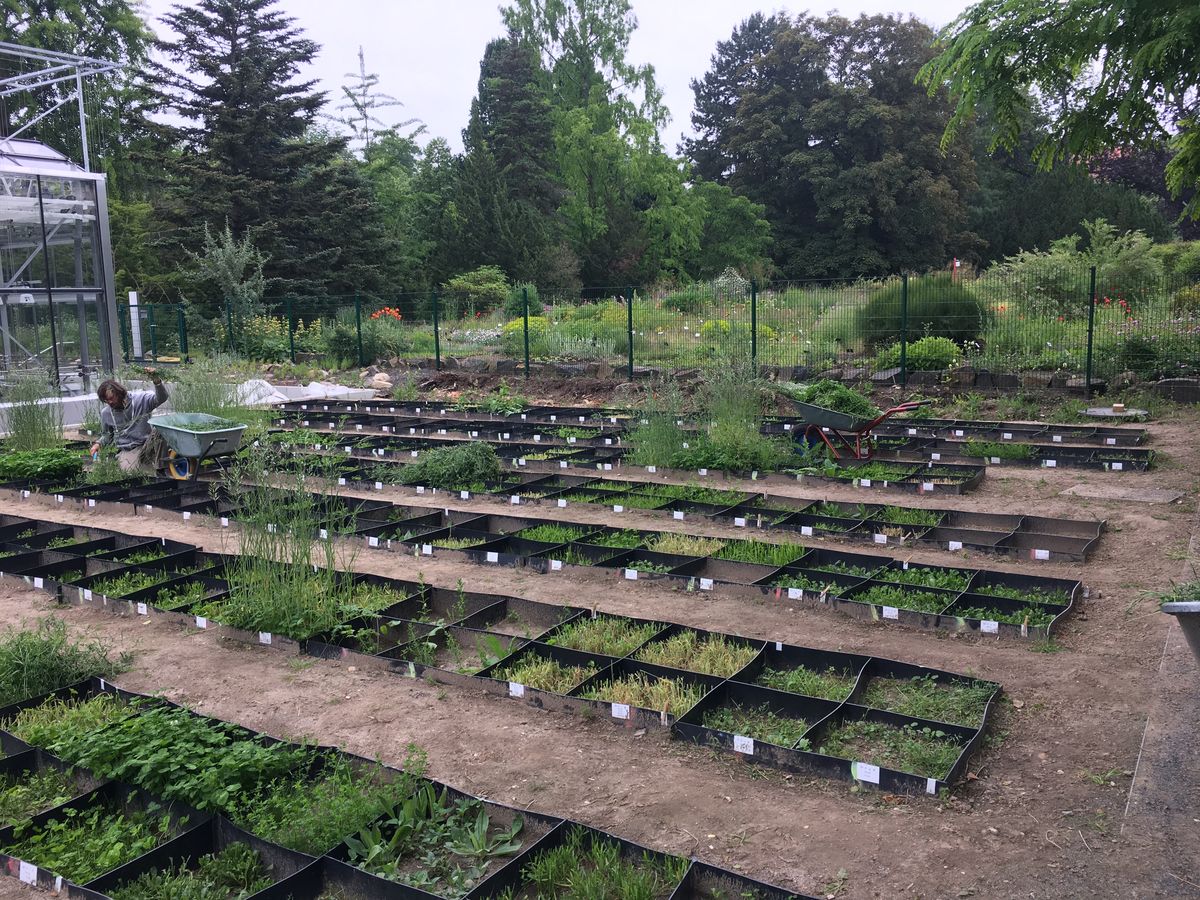In our working group, we have a diverse of projects in grassland ecosystems.
The Jena Experiment was initiated in 2002 to study the effects of grassland plant diversity on element cycling and trophic interactions. It is one of the largest grassland biodiversity experiments in the world and at the same time one of the oldest. The Jena Experiment provides a unique platform to study effects of plant species richness (ranging from 1 to 60 species) and functional diversity (including 4 functional groups) on a wide range of ecosystem processes. The research in our working group has been entwined with this platform since the beginning.
In the current phase of the research group on “Biotic interactions, community assembly, and eco-evolutionary dynamics as drivers of long-term biodiversity-ecosystem functioning relationships” Christian Wirth and Alexandra Weigelt supervise three PhD projects and are directly responsible for the long-term central data of root standing biomass.
The following two PhD theses in the Jena Experiment are directly linked to our research group:
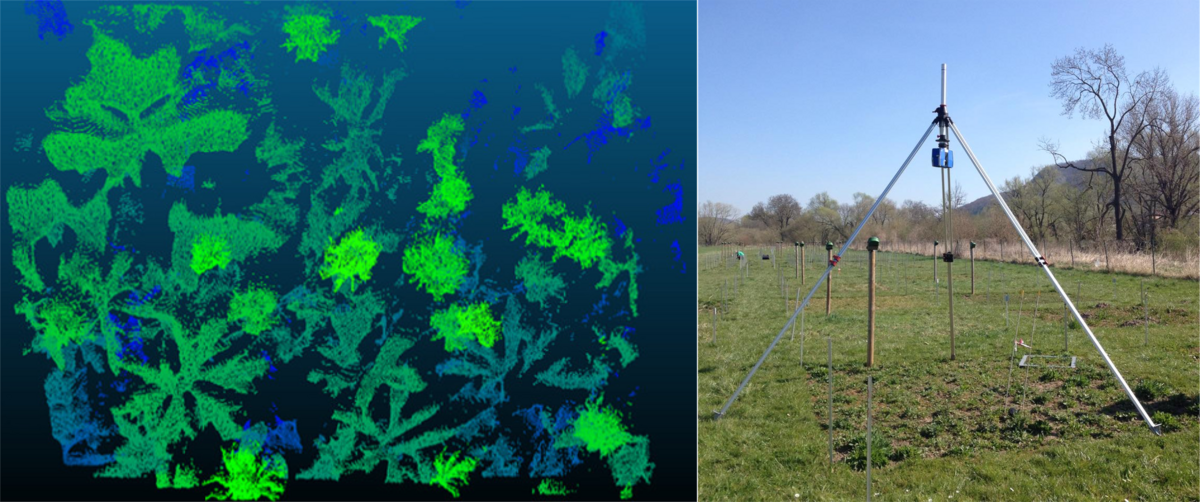
This project is performed by Claudia Guimarães-Steinicke (supervised by Prof. Christian Wirth and Prof. Alexandra Weigelt).
Biodiversity often improves ecosystem function. Most mechanisms used to explain this relationship focus on the complementary use of nutrients, light or water. In addition, much of the research is based on snapshots of vegetation during the year. We investigate how vegetation structure and phenological diversity influence the relationship between biodiversity and ecosystem functions. To do this, we have collected temporally and spatially high-resolution data using a combination of state-of-the-art techniques such as terrestrial laser scanning (TLS), time-lapse, and thermal imagery. In addition, we use functional features from the Jena experiment to answer the following questions:
- How do different facets of plant diversity (functional diversity, functional identity, and species richness) predict aboveground biomass over time?
Check out this study. - How do different biodiversity facets affect community surface temperature via 3D canopy structure in grassland communities?
Check out this study. - How does biodiversity affect measures of canopy structure over time? Check out this study
This project is performed by Ana Asato (supervised by Prof. Dr. Nico Eisenhauer (Universität Leipzig und IDiv), Dr. Jes Hines (IDiv), Prof. Dr. Christian Wirth (Universität Leipzig und IDiv) - as Co-PI - and supported by Claudia Guimaraes-Steinicke)
One major underlying reason why relationships between biodiversity and ecosystem functioning strengthen over time may be that species respond to the presence of competitors by differentiating into dissimilar niches, which allows diverse communities to maximize resource use and minimize competition. In theory, such niche differences include temporal variation in biological activity, but the seasonality (phenology) and development of plant temporal niches and potential linkages to soil biological activity patterns have rarely been quantified in BEF experiments.
In this subproject, we designed three coordinated work packages to test mechanisms driving potential shifts in activity periods. We start by testing whether aboveground and belowground activity periods are linked to the effects of plant diversity on abiotic conditions (WP1). If so, are activity periods dependent upon longer-term selection effects of plant diversity on soils (WP2), or are activity periods more strongly associated with plant traits and plant history, and their interaction with soil history (WP3)? By exploring the influence of plant diversity, plant history, and soil history on the onset, magnitude, duration, and stability of activity patterns, we test whether these factors drive temporal niche differentiation and strengthen over time due to plant history and soil history effects. If true, an important implication is that novel communities without shared interaction history could be a poor surrogate for conservation of biodiversity and ecosystem functioning in the long-term.
This project is performed by Leonardo Bassi (supervised by Prof. Alexandra Weigelt and Prof. Nicole van Dam)
Biodiversity-ecosystem functioning (BEF) relationships often become stronger over time. The increasing performance of communities with high plant diversity is thought to arise from the accumulation of plant growth facilitators. Alternatively, in low-diversity communities, the rapid accumulation of belowground antagonists causes negative feedbacks and a decline in the functioning over time. If antagonists drive the BEF relationship, selection for more effective defense or tolerance mechanisms should be stronger in plants from low-diversity communities than in plants from high-diversity communities. The aim of our project is to evaluate the biodiversity effects that result from changes in biotic interactions, regardless of whether the effect is driven by herbivores or pathogens. Specifically we aim to
- identify plant traits, especially root traits, potentially related to plant-antagonist interactions along a grassland plant diversity gradient and
- determine if and how these changes depend on the soil and plant history.
We will examine a comprehensive set of morphological and chemical root and shoot traits representing different aspects of plant adaptive strategies. We hypothesize that investment in defense traits should be highest in long-term, low-diversity plant communities and lowest in young and diverse plant mixtures. Our ultimate goal is to provide a mechanistic, trait-based explanation for the primarily negative feedback effects observed in BEF relationships.
This project is carried out by Karl Andraczek (supervision by Prof. Alexandra Weigelt and Asst. Prof. Alfons van der Plas and other experts in fungal and root research, cooperation with specialists.
A major question in the field of ecology is how plant species richness is related to biomass production in grasslands. This question was intensively studied from two perspectives, either in which biomass production drives variation in plant species richness (Productivity Richness Relationships/ PRR), or where a reverse causality is assumed, in which plant richness drives variation in plant productivity (Biodiversity and Ecosystem Functioning/ BEF). While PRR and BEF mechanisms may jointly operate and are inherently related, they are typically studied in separation. However, PRR cannot be fully understood without accounting for BEF relationships, and vice versa. The main aim of this project is to compare the relative strength of both, PRR and BEF relationships in driving overall relationships between species richness and biomass production in agricultural grasslands. This will be done by combining experiments and comparative observations along a land-use intensity gradient in Germany, as part of the “Biodiversity Exploratories'' framework. Thus, we aim to study following questions:
- Do experimental manipulations in grassland standing biomass (through grazing, mowing or fertilization) drive changes in plant species richness?
- Do experimental manipulations in plant richness (through grazing, mowing and/or seed addition) drive changes in plant biomass production, and standing plant biomass?
- What are absolute and standardized effects of plant productivity (through standing biomass and light availability) on plant species richness, and those of plant species richness on biomass production?
This project is performed by Justus Hennecke (Supervised by Prof. Dr. Alexandra Weigelt together with a team of root and soil experts)
Only very recently, a new functional framework has been proposed by sROOT that is able to explain root trait variation across the globe. This Root Economics Space (RES) framework has an explicit link to mycorrhizal fungi, so it may provide a comprehensive framework to link plant functional diversity to soil biodiversity thereby offering a new perspective to understanding the diversity of soil microorganisms in grasslands. RESfun will test this link explicitly for soil-borne fungi as a proof-of-principle. Ultimately, we expect that root trait dissimilarity within the root economics space should provide a high diversity of food sources and interaction niches for all soil organisms and thus favor soil biodiversity in general.
We will build on the strengths of the German center for integrative biodiversity research (iDiv) Halle-Jena-Leipzig by integrating ongoing grassland experiments (Jena Experiment and Biodiversity Exploratories) and monitoring programs (SoilBON) at different scales to establish the links between root traits and soil-borne fungal community composition. The project focuses on fungi, as this is a large and variable group that provides different crucial ecological functions. By collaborating with specialists in the field of molecular ecology (Liesje Mommer, Anna Heintz-Buschart, Joana Bergmann), we are able to classify these organisms taxonomically and importantly, also functionally. Collaboration with soil ecologists (Nico Eisenhauer, Carlos Guerra, Markus Lange) allows us to upscale our findings to other organismal groups such as nematodes. We hypothesize:
- The abundance and composition of specific ecological soil-borne fungal guilds is correlated to the two axes of the RES: saprotrophic fungi are correlated to conservation traits, mutualistic and pathogenic fungi are correlated to collaboration traits (Fig. 1).
- The soil-borne fungal diversity in the rhizosphere of individual plants in a mixed community is a function of the root traits of the target plant and the neighbors.
- Increasing environmental and management gradients have stronger effects on trait-fungal relationships than increasing diversity gradients.
- The RES explains functional guild diversity in other groups which we will test for nematodes.
This is a research platform established in 2020 by our working group as a group effort which is used primarily for teaching related projects (main supervision Ass. Prof. Fons van der Plas, Ass. Prof. Kathryn Barry, Justus Hennecke & Prof. Alexandra Weigelt)
Biodiversity change is a complex phenomenon. This change occurs differently across scales: larger scale biodiversity loss (loss in γ-diversity) results from either biodiversity loss within smaller scale patches (α-diversity loss) and/or due to a reduction in the spatial turnover in species composition across patches (i.e. biotic homogenization, or β-diversity loss). BEF research primarily focuses on the consequences of within patch (α-) diversity loss, while the effects of β-diversity loss are less well understood in spite of the prevalence of declines in β-diversity.
The effect of β-diversity on the relationship between biodiversity and ecosystem functioning (BEF) among patches of vegetation could be driven by environmental heterogeneity and dispersal processes between local patches. However, experiments testing the importance of β-diversity as a driver of BEF relationship across patches are scarce which is why we initiated an experiment to investigate the following questions:
- How will declining turnover influence ecosystem functioning when separated from declines in species richness?
- How does dispersal influence the turnover-ecosystem functioning relationship?
- How does environmental heterogeneity influence the turnover-ecosystem functioning relationship?
